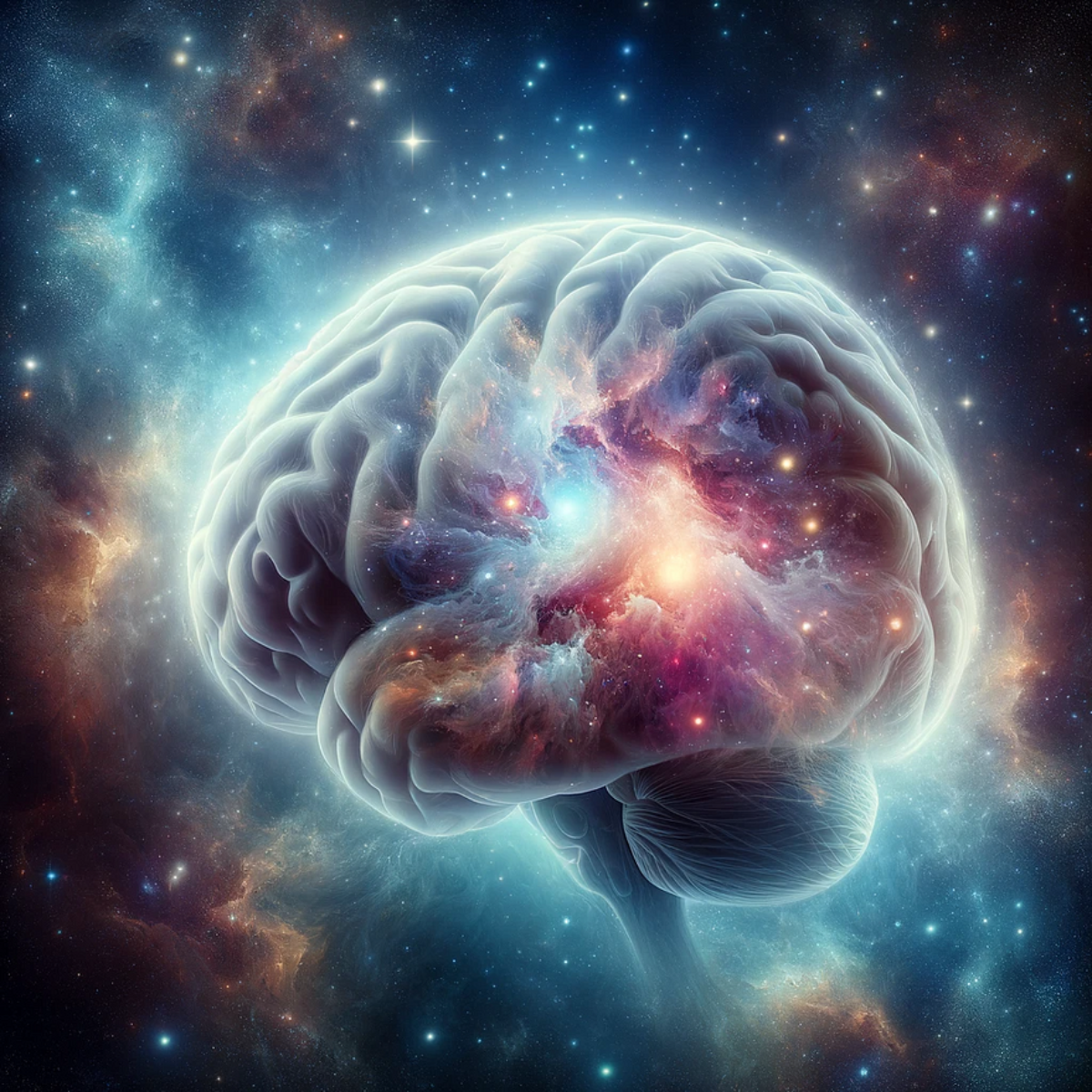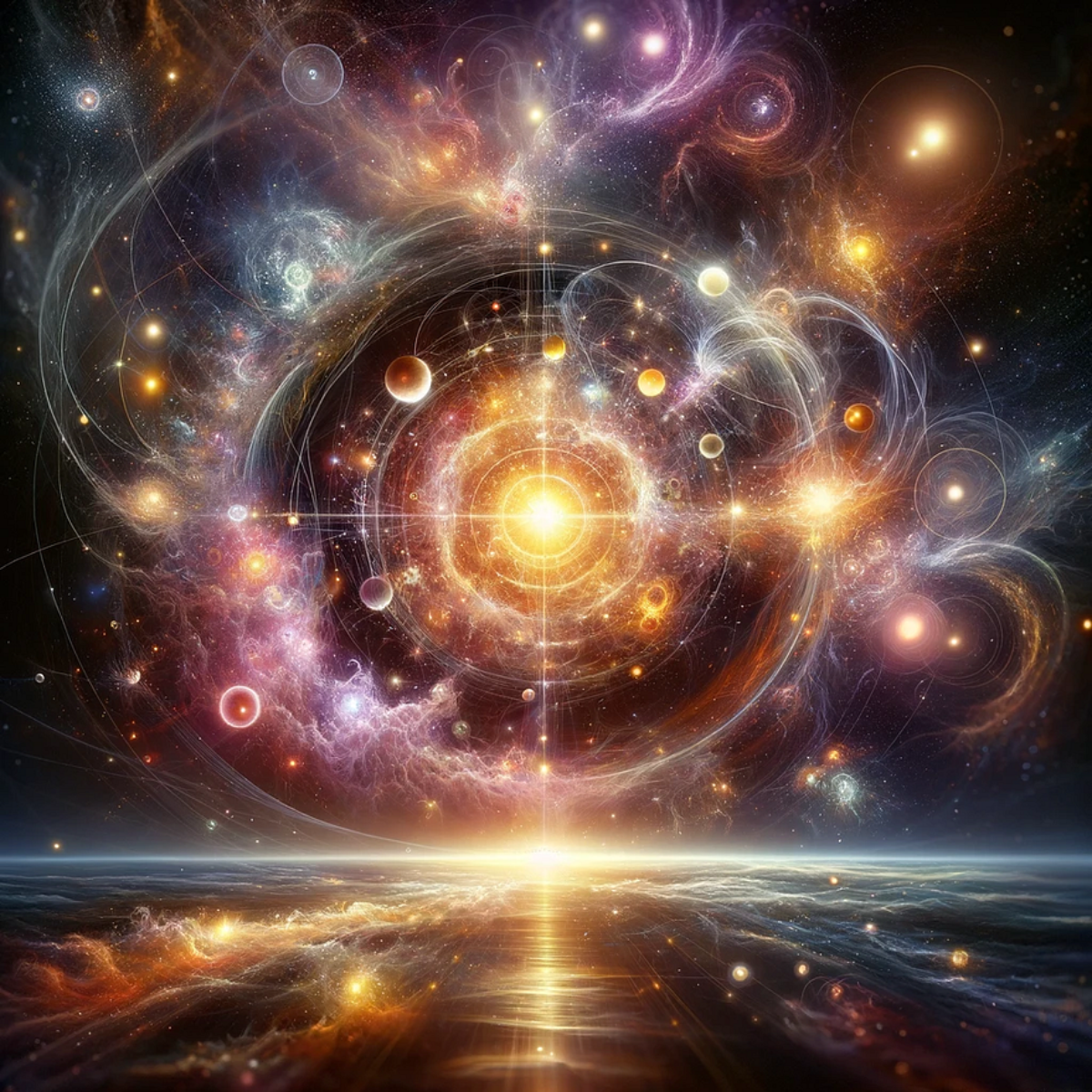
Ever ask yourself what is consciousness? If you’ve cracked the code, do the world a favor and spill the tea. This puzzle has been playing hard to get since the dawn of self-reflection. In simple terms, consciousness is our awareness of ourselves and the world spinning around us. It’s that inner voice that narrates your day, the bit of you that savors your morning coffee and grumbles in traffic jams.
But let’s be honest, grasping the essence of consciousness is anything but simple. We have no freakin’ idea what consciousness is. Sure, we can describe it — talk about brain waves, neurons, and our sense of self — but grasping its true essence, and understanding how it shapes our experiences, that’s where we hit a wall. It’s like peeling a multidimensional onion without a core, each layer stranger than the last.
Consciousness: The Great Mystery in History
History shows us that consciousness has always been a bit of a riddle, picking up intriguing ideas along its journey. Ancient civilizations in Egypt and India believed that consciousness was intricately linked with the soul or spirit. These ancient thinkers weaved in the fabric of life and death through a mystical lens and paved the way for philosophical giants of antiquity–Socrates, Plato, and Aristotle. These were the philosophical powerhouses that laid the foundation for our understanding of thought.
Plato saw consciousness as the soul’s intimate understanding of itself and its surroundings — a sort of inner light illuminating the external world. Aristotle took a different approach. He proposed that the mind starts as a clean slate, shaped and colored by the experiences of our senses.
Then came the Middle Ages. Not the brightest spot in human history when it comes to philosophical and scientific advancement. It’s a real snooze-fest. But eventually, like a phoenix rising from the ashes, the Renaissance was born, sparking the Enlightenment era — a real turning point for human thought. This period brought us thinkers like René Descartes who famously coined the phrase ‘I think therefore I am.’ If you ponder about your existence, you exist. Easy right? Not so fast.
Brains & Bots: The New Frontier
Just when we thought we had it all sussed out, neuroscience, contemporary philosophy, and theoretical physics threw us a curveball. Researchers in neuroscience are digging into the intricacies of our brains to uncover how those wrinkly masses in our skulls conjure up thoughts and images. They’re mapping neural pathways, zapping neurons, and using fancy gadgets like fMRI machines, all in the quest to find the elusive essence of consciousness.
This relentless probing into the brain’s mysteries laid the groundwork for something revolutionary — the birth of Artificial Intelligence (AI). It’s akin to the early, wild west days of the internet — a new frontier brimming with possibilities and uncharted territories. AI is embedded with a spark of ‘intelligence’ that’s eerily reminiscent of how our brain functions. By mimicking neural networks and learning patterns, AI and deep learning models are reshaping what we thought was possible, blurring the lines between human cognition and machine processing.
It’s like watching a sci-fi flick come to life, where AI is gradually inching towards something that once was exclusively for humans — understanding, learning, and even ‘thinking.’ The implications? They’re vast and still unfolding. We’re standing on the brink of an era where the lines between AI consciousness and actual human consciousness might just start to blur.
But, wait there’s more. The gravy gets thicker when we bring in the Simulation Hypothesis. This is a mind-bending concept that makes you wonder: Are our experiences real, or are we just avatars in some cosmic version of The Sims?

Simulation Hypothesis: Reality or Sci-Fi?
Let’s go a bit deeper and explore this thought. The Simulation Hypothesis is the idea that everything around us, everything we know and experience is probably an advanced simulation. A ginormous quantum virtual reality. Sounds crazy right? I know, I know. But hear me out. Put your simulation goggles on, it’s about to get nuts.
The Simulation Hypothesis is not a joke folks. It’s a respected hypothesis proposed by the philosopher Nick Bostrom. The initial title of the paper is called “Are You Living in a Simulation?” Don’t get me wrong. This theory has been debated within the scientific community. Most verbally by a cosmetologist named George F.R. Ellis. However, he hasn’t provided a comprehensive critique of Bostrom’s hypothesis. Instead, he scoffed at the concept saying it was technically impractical, and accused Bostrom of confusing science fiction with science.
I don’t know what ya’ll think, but the latest advancements in quantum computing and AI are showing Bostrom’s hypothesis might be more than just a thought— it’s edging closer to reality. Soon, we’ll have enough computing power to simulate a mini-verse within our universe. So meta right? With the world seemingly getting stranger and stranger, I can’t help but believe that Santa Claus could be real at this point. But I haven’t seen any proof of that yet. Sorry kiddos.
Quantum Quandaries: Decoding Consciousness
Jokes aside, the Simulation Hypothesis offers a compelling perspective on the laws of physics, suggesting they might resemble codes and algorithms, intricately designed for peak computational efficiency. Let’s take the famed double-slit experiment in quantum mechanics as an example. It reveals that electrons and photons have a sort of dual behavior: they act like waves when unobserved but morph into particles under observation.
Now, you might wonder how this ties into the Simulation Hypothesis. Think of this: what if the dual behavior of the electrons and photons is not random but a result of our universe, the ‘simulation,’ conserving its resources? The double-slit experiment in conjunction with the Simulation Hypothesis supports the idea that reality is rendered in detail only when it’s under observation. Much like a video game that only generates detailed graphics within the player’s field of vision.
While the double-slit experiment doesn’t outright validate the Simulation Hypothesis, it certainly adds a layer of intrigue. Could it be that our physical laws and limitations are not fundamental truths but rather programmed constraints within our simulated reality? It’s a thought that challenges our understanding of consciousness, the universe, and our place within it.
Holographic Universe: More Than Meets the Eye
Let’s venture into another groundbreaking concept: the Holographic Universe Principle. It’s a respected theory in the realm of theoretical physics, stemming from the principles of quantum gravity and black hole thermodynamics. The theory proposes that just like a hologram, information about the entire universe could be encoded on a distant two-dimensional plane, challenging our conventional understanding of the universe– and, in turn, challenging our understanding of reality itself.
Now, let’s think about how this idea connects to consciousness and the Simulation Hypothesis. In a holographic universe, the very essence of what we perceive and experience could be drastically different from our traditional understanding. Imagine if our entire universe, with all its complexity and intricacies, is essentially a projection from a simpler, two-dimensional reality, much like a video game.
Think about ‘Super Mario Bros.,’ a game where the entire world is created in two dimensions. Mario’s universe, with its challenges, adventures, and landscapes, exists on a flat plane. Now, apply this idea to our universe: what if our reality, as rich and multi-faceted as it appears, is akin to Mario’s world, originating from a more basic, two-dimensional space?
This perspective challenges us to rethink the nature of our consciousness. Think about it. Is our awareness and sense of self part of this holographic projection? Perhaps our thoughts and feelings are like interpretations of this two-dimensional information, similar to how Mario perceives his world in the game.

Rethinking Reality: The Final Frontier
The implications for consciousness are profound. If our perceived reality is just a projection, where does that leave our consciousness? Is it also a projection of something more fundamental, or does it play a role in interpreting and shaping this holographic reality? These questions push us to the edge of philosophical inquiry and scientific exploration, blurring the lines between what’s real and what’s possible.
In this ever-evolving quest to understand consciousness, theories like the Holographic Universe Principle and the Simulation Hypothesis not only challenge our understanding of the physical world but also invite us to rethink the very essence of our existence. As we dig through the layers of reality, each discovery brings new questions, each theory a new perspective.
In the grand tapestry of consciousness, each thread we uncover reveals more about ourselves and the universe we inhabit. The journey is as perplexing as it is exhilarating, a testament to the unending quest of the human spirit to understand the unknown. And that right there, is enough worth living for.
© 2023 Evelyn Ann Rose. All rights reserved.
References:
HandWiki. ‘Simulation Hypothesis.’ Retrieved from https://handwiki.org/wiki/Philosophy:Simulation_hypothesis.
Neuroscience News. New Insights into Consciousness from Neuroscience Research. Neuroscience News. https://neurosciencenews.com/consciousness-neuroscience-23299/
Bostrom, Nick. “Are We Living in a Computer Simulation?” The Philosophical Quarterly (1950-), vol. 53, no. 211, 2003, pp. 243–55. JSTOR, http://www.jstor.org/stable/3542867. Accessed 19 Dec. 2023.
Forbes, 21 March 2023, “If You Think AI Is Hot, Wait Until It Meets Quantum Computing.” https://www.forbes.com/sites/sap/2023/03/21/if-you-think-ai-is-hot-wait-until-it-meets-quantum-computing/?sh=4447975f1ff6
Vox. (2015, June 29). Explaining the Holographic Principle, the theory that could revolutionize our understanding of the universe. Vox. https://www.vox.com/2015/6/29/8847863/holographic-principle-universe-theory-physics



